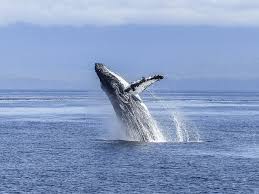Humpback Whale Migration: Caribbean Spectacle
Humpback Whale Migration Through the US Virgin Islands
The US Virgin Islands, a tropical paradise in the Caribbean, boast crystal-clear waters, lush green landscapes, and a vibrant marine ecosystem. Among the myriad of natural wonders that grace these islands, one of the most awe-inspiring is the annual migration of humpback whales. Every year, from late winter to early spring, these magnificent creatures embark on an epic journey through the waters surrounding the US Virgin Islands, offering a breathtaking spectacle that captivates locals and tourists alike.
Humpback whales (Megaptera novaeangliae) are renowned for their colossal size, powerful tails, and melodious songs. These gentle giants can reach lengths of up to 50 feet and weigh as much as 40 tons, making them one of the largest animals on the planet. Despite their immense size, humpback whales are incredibly agile swimmers, and their migration patterns demonstrate the astonishing feats of navigation and endurance that they undertake.
The annual migration of humpback whales through the US Virgin Islands is part of a larger journey that spans thousands of miles. These majestic marine mammals spend their summers in cold, nutrient-rich waters near the polar regions, where they feed voraciously on krill, small fish, and other prey. As winter approaches and these northern waters become increasingly inhospitable, humpback whales begin their migration southward to warmer, tropical waters for breeding and calving.

Always a treat to see a humpback whale breach
One of the primary routes for humpback whale migration passes through the Caribbean, and the US Virgin Islands are strategically located along this route. Each year, typically from January to April, these islands become a temporary home and a crucial rest stop for humpback whales on their journey to warmer waters. The warm, sheltered bays and abundant food sources found around the US Virgin Islands make them an ideal destination for these magnificent creatures during the winter months.
The migration of humpback whales is not a solitary endeavor but rather a communal affair. These whales are known for their strong social bonds and complex communication, which includes their mesmerizing songs. The breeding and calving grounds in the Caribbean provide an opportunity for humpback whales to engage in these social activities while also giving birth to their young.
The shallow, protected waters surrounding the US Virgin Islands are particularly important for humpback whales during calving season. Female humpbacks, known as cows, give birth to their calves in these warm, tranquil waters. The newborns, known as calves, are typically around 12-15 feet long and weigh approximately one ton at birth. The US Virgin Islands’ calm bays and clear waters provide a safe haven for these vulnerable young whales to gain strength and adapt to their new marine environment.
As humpback whales continue to migrate through the US Virgin Islands, their behavior offers a remarkable spectacle for those fortunate enough to witness it. One of the most iconic displays is the breaching behavior, where a whale propels itself out of the water and crashes back with an enormous splash. This behavior is believed to serve various purposes, from communication and play to shedding parasites and simply expressing their exuberance.
Humpback whales are also known for their tail-slapping and flipper-slapping displays. The loud smacks created by these actions can be heard from afar and add to the excitement of observing these majestic creatures. Whale-watching tours have become a popular activity for tourists in the US Virgin Islands, providing a unique opportunity to witness these breathtaking displays in their natural habitat.
To ensure the safety and well-being of these magnificent animals, there are strict guidelines and regulations in place for whale-watching activities in the US Virgin Islands. These guidelines emphasize maintaining a respectful distance from the whales and minimizing disturbances to their natural behaviors. It’s essential to approach these creatures with caution and respect, as they are protected under various international and regional laws, including the Marine Mammal Protection Act.
The presence of humpback whales in the US Virgin Islands not only enriches the local tourism industry but also contributes to the ecological balance of the region. Whales play a vital role in marine ecosystems by redistributing nutrients through their waste and contributing to the overall health of the oceans.

A humpback whale and her calf
Furthermore, the presence of humpback whales in these waters underscores the importance of conservation efforts to protect their habitats and ensure their continued survival. Climate change, pollution, habitat destruction, and collisions with vessels pose significant threats to these majestic creatures. Initiatives to reduce the impact of human activities on humpback whales and their habitats are crucial to safeguarding their future.
In conclusion, the annual migration of humpback whales through the US Virgin Islands is a natural wonder that showcases the awe-inspiring beauty of the marine world. These gentle giants embark on an epic journey, traveling thousands of miles to reach the warm, tranquil waters of the Caribbean, where they give birth to their young and engage in a variety of captivating behaviors. The US Virgin Islands play a vital role in this annual migration, offering a sanctuary for humpback whales and a unique opportunity for humans to connect with and appreciate these magnificent creatures. However, as stewards of the environment, it is our responsibility to protect and preserve their habitats, ensuring that future generations can continue to marvel at the humpback whales’ remarkable migration through these pristine Caribbean waters.
